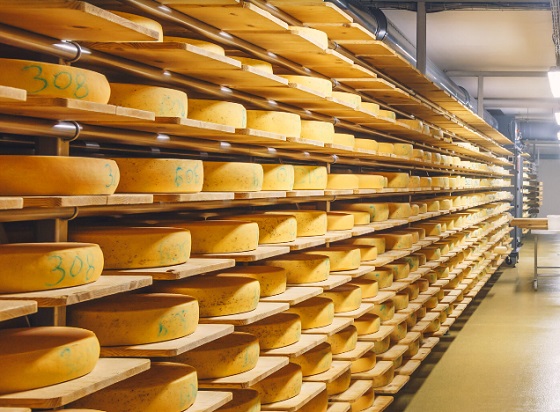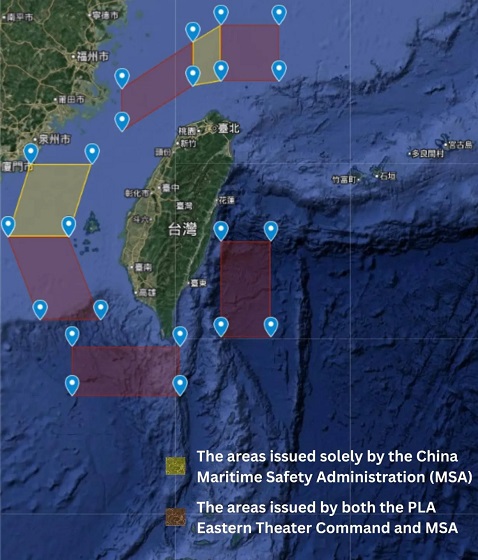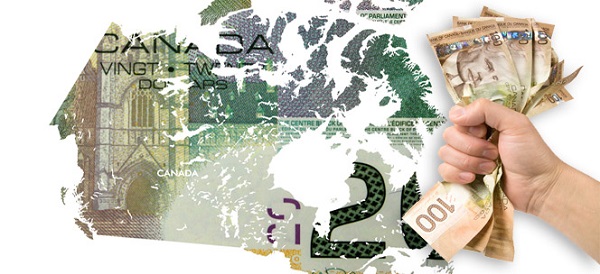Agriculture
WEF report calls on governments to push fake meat products to meet Paris Climate goals

From LifeSiteNews
The World Economic Forum has urged governments to join in a coordinated effort with corporations to drive consumer behavior change toward lab-grown meats and ‘alternative protein’ sources to ‘decarbonize the global economy.’
The unelected globalists at the World Economic Forum (WEF) call on governments to promote fake meat and other alternative proteins in a coordinated effort to drive “consumer behavior change.”
In a white paper entitled “Creating a Vibrant Food Innovation Ecosystem: How Israel Is Advancing Alternative Proteins Across Sectors,” the authors claim that the push towards alternative proteins requires a global effort of governments and corporations working together to manipulate human behaviour:
Government leadership is needed to develop and promote alternative proteins and address one of the biggest global challenges of this era.
According to the report, achieving universally accessible protein will require multiple transition pathways:
- Accelerating protein diversification.
- Advancing sustainable production systems.
- Driving consumer behavior change.
What’s the reason behind the push to drive consumer behavior change towards fake meat and other alternative proteins?
The science is clear: it will be impossible for governments and others, including farmers, the private sector and consumers, to meet their obligations under the Paris Agreement and decarbonize the global economy without investing in sustainable protein diversification pathways and the overall food system.
“Nations around the world are becoming aware of the benefits of prioritizing alternative proteins to meet their climate, biodiversity, food security and public health goals,” the report claims.
However, due to the “high-tech nature” of alternative proteins and their “high capital expenditures (CAPEX) requirement and longer return on investment timelines,” the authors say they “may pose investment challenges for some parts of the private sector.”
This is where the unelected globalists want governments to step in to incentivize, coerce, modify, or otherwise manipulate human behavior, “within current frameworks,” like the ones that gave us COVID lockdowns and vaccine passports.
“Within current frameworks, governments can create clear, supportive, agile and efficient regulatory processes to ensure safe and transparent pathways that instill confidence in consumers and industry players alike, fostering a robust alternative protein market in a shift towards food systems that are more sustainable, secure and just,” the authors claim.
On the flipside, Italy has already banned lab-grown meat, and Wired reports that “States are lining up to outlaw lab-grown meat,” with legislation proposed in Florida, Alabama, Arizona, Kentucky, and Tennessee.
Governments need to consider investing in open-access research and creating private sector incentives to realize the full economic and societal benefits of plant-based and cultivated meat and make these options accessible to all.
Notably absent from the latest WEF report is any mention of the use of insects as an alternative protein, which is something the unelected globalists have been pushing for years.
The current report says that alternative proteins consist of plant-based meat, cultivated meat, and fermented products.
However, the WEF’s White Paper on Alternative Proteins published in January 2019 states that alternative proteins involve “purely plant‑based alternatives, products based on insects and other novel protein sources, and the application of cutting‑edge biotechnology to develop cultured meat [emphasis added].”
So, it appears that the WEF is trying to distance itself from the “you will eat zee bugs” ridicule it has been receiving as of late:
Alternative proteins are game-changing agricultural innovations that, with proper levels of support, can help aid planetary and public health.
Award-winning journalist, Alex Newman: "Controlling the food and the energy is the way to control humanity. So when you look at this war on farmers, it seems to me that the intended consequence is total domination of mankind."
"No totalitarian with any sense ever said: 'Hey… pic.twitter.com/nb8EwEPr1R
— Wide Awake Media (@wideawake_media) May 27, 2024
The official narrative to push fake food on the populace is that it will help tackle challenges in climate change, food security, and planetary health.
The latest report states that “[in] light of the escalating challenges posed by climate change and the need to ensure food security, nations are called on to undertake a collective effort to elevate alternative proteins as a solution.”
But what the alternative protein agenda is really about is destroying independent farmers, taking their land, and controlling what people can eat.
Control the food, control the people.
The same can be said of money and energy, and the unelected globalists are definitely trying to control them all through individual carbon footprint trackers, central bank digital currencies, and alternative proteins:
Countries that strategically adapt to evolving global food systems and diversify their food value chains stand to benefit from the positive impacts of integrating alternative proteins into their national policies.
Unelected globalists are waging a war on farmers and property rights, under the guise of “saving the planet”. If we don’t resist their agenda, we and our children will be left with no choice but to eat insects and Bill Gates’ lab-grown "meat".
But what is their agenda exactly?… pic.twitter.com/lC4uD1Aac3
— Eva Vlaardingerbroek (@EvaVlaar) October 27, 2023
At the same time, the WEF report says that a potential shift to alternative proteins would actually help farmers:
There is a growing acknowledgement that, despite the industry being in its infancy, alternative proteins – meat made from plants, cultivated from animal cells or fermentation-derived meat – have transformative potential, particularly for farmers, who can benefit from and lead the transition towards a thriving alt-protein economy.
Did they really just say that meat is made from plants?
And how is that farmers can possibly benefit from the production of fake food grown in labs?
According to the authors, “Projections indicate a substantial surplus of agricultural side streams, particularly from corn, soy, wheat, sugarcane, barley, rice, canola and tomatoes. Using these for alternative protein production represents a significant opportunity to enhance sustainability and circularity within the food supply chain, optimizing resource use and creating a more resilient agricultural sector.”
In other words, farmers will be coerced, incentivized, or otherwise manipulated into growing only what they are told to grow, so that their crops can be used to produce fake food.
At the same time, “Plant-based and cultivated meat require a small fraction of the land and cause far fewer emissions than industrial animal farming. Freed-up land can be repurposed for biodiversity preservation, reforestation and more ecologically friendly and regenerative methods of animal farming.”
READ: Italy’s parliament bans artificial foods derived from animal ‘cells’
The idea here is to shrink the amount of land needed for farming real food in order to make way for fake food that can be synthetically engineered with “far fewer emissions.”
Climate change policies have morphed into public and planetary health policies, and the unelected globalist solutions are always the same: merge corporation and state to monitor, manipulate, and control human behavior.
Reprinted with permission from The Sociable.
Agriculture
The Climate Argument Against Livestock Doesn’t Add Up

From the Frontier Centre for Public Policy
Livestock contribute far less to emissions than activists claim, and eliminating them would weaken nutrition, resilience and food security
The war on livestock pushed by Net Zero ideologues is not environmental science; it’s a dangerous, misguided campaign that threatens global food security.
The priests of Net Zero 2050 have declared war on the cow, the pig and the chicken. From glass towers in London, Brussels and Ottawa, they argue that cutting animal protein, shrinking herds and pushing people toward lentils and lab-grown alternatives will save the climate from a steer’s burp.
This is not science. It is an urban belief that billions of people can be pushed toward a diet promoted by some policymakers who have never worked a field or heard a rooster at dawn. Eliminating or sharply reducing livestock would destabilize food systems and increase global hunger. In Canada, livestock account for about three per cent of total greenhouse gas emissions, according to Environment and Climate Change Canada.
Activists speak as if livestock suddenly appeared in the last century, belching fossil carbon into the air. In reality, the relationship between humans and the animals we raise is older than agriculture. It is part of how our species developed.
Two million years ago, early humans ate meat and marrow, mastered fire and developed larger brains. The expensive-tissue hypothesis, a theory that explains how early humans traded gut size for brain growth, is not ideology; it is basic anthropology. Animal fat and protein helped build the human brain and the societies that followed.
Domestication deepened that relationship. When humans raised cattle, sheep, pigs and chickens, we created a long partnership that shaped both species. Wolves became dogs. Aurochs, the wild ancestors of modern cattle, became domesticated animals. Junglefowl became chickens that could lay eggs reliably. These animals lived with us because it increased their chances of survival.
In return, they received protection, veterinary care and steady food during drought and winter. More than 70,000 Canadian farms raise cattle, hogs, poultry or sheep, supporting hundreds of thousands of jobs across the supply chain.
Livestock also protected people from climate extremes. When crops failed, grasslands still produced forage, and herds converted that into food. During the Little Ice Age, millions in Europe starved because grain crops collapsed. Pastoral communities, which lived from herding livestock rather than crops, survived because their herds could still graze. Removing livestock would offer little climate benefit, yet it would eliminate one of humanity’s most reliable protections against environmental shocks.
Today, a Maasai child in Kenya or northern Tanzania drinking milk from a cow grazing on dry land has a steadier food source than a vegan in a Berlin apartment relying on global shipping. Modern genetics and nutrition have pushed this relationship further. For the first time, the poorest billion people have access to complete protein and key nutrients such as iron, zinc, B12 and retinol, a form of vitamin A, that plants cannot supply without industrial processing or fortification. Canada also imports significant volumes of soy-based and other plant-protein products, making many urban vegan diets more dependent on long-distance supply chains than people assume. The war on livestock is not a war on carbon; it is a war on the most successful anti-poverty tool ever created.
And what about the animals? Remove humans tomorrow and most commercial chickens would die of exposure, merino sheep would overheat under their own wool and dairy cattle would suffer from untreated mastitis (a bacterial infection of the udder). These species are fully domesticated. Without us, they would disappear.
Net Zero 2050 is a climate target adopted by federal and provincial governments, but debates continue over whether it requires reducing livestock herds or simply improving farm practices. Net Zero advocates look at a pasture and see methane. Farmers see land producing food from nothing more than sunlight, rain and grass.
So the question is not technical. It is about how we see ourselves. Does the Net Zero vision treat humans as part of the natural world, or as a threat that must be contained by forcing diets and erasing long-standing food systems? Eliminating livestock sends the message that human presence itself is an environmental problem, not a participant in a functioning ecosystem.
The cow is not the enemy of the planet. Pasture is not a problem to fix. It is a solution our ancestors discovered long before anyone used the word “sustainable.” We abandon it at our peril and at theirs.
Dr. Joseph Fournier is a senior fellow at the Frontier Centre for Public Policy. An accomplished scientist and former energy executive, he holds graduate training in chemical physics and has written more than 100 articles on energy, environment and climate science.
Agriculture
End Supply Management—For the Sake of Canadian Consumers

This is a special preview article from the:
U.S. President Donald Trump’s trade policy is often chaotic and punitive. But on one point, he is right: Canada’s agricultural supply management system has to go. Not because it is unfair to the United States, though it clearly is, but because it punishes Canadians. Supply management is a government-enforced price-fixing scheme that limits consumer choice, inflates grocery bills, wastes food, and shields a small, politically powerful group of producers from competition—at the direct expense of millions of households.
And yet Ottawa continues to support this socialist shakedown. Last week, Prime Minister Mark Carney told reporters supply management was “not on the table” in negotiations for a renewed United States-Mexico-Canada Trade Agreement, despite U.S. negotiators citing it as a roadblock to a new deal.
Supply management relies on a web of production quotas, fixed farmgate prices, strict import limits, and punitive tariffs that can approach 300 percent. Bureaucrats decide how much milk, chicken, eggs, and poultry Canadians farmers produce and which farmers can produce how much. When officials misjudge demand—as they recently did with chicken and eggs—farmers are legally barred from responding. The result is predictable: shortages, soaring prices, and frustrated consumers staring at emptier shelves and higher bills.
This is not a theoretical problem. Canada’s most recent chicken production cycle, ending in May 2025, produced one of the worst supply shortfalls in decades. Demand rose unexpectedly, but quotas froze supply in place. Canadian farmers could not increase production. Instead, consumers paid more for scarce domestic poultry while last-minute imports filled the gap at premium prices. Eggs followed a similar pattern, with shortages triggering a convoluted “allocation” system that opened the door to massive foreign imports rather than empowering Canadian farmers to respond.
Over a century of global experience has shown that central economic planning fails. Governments are simply not good at “matching” supply with demand. There is no reason to believe Ottawa’s attempts to manage a handful of food categories should fare any better. And yet supply management persists, even as its costs mount.
Those costs fall squarely on consumers. According to a Fraser Institute estimate, supply management adds roughly $375 a year to the average Canadian household’s grocery bill. Because lower-income families spend a much higher proportion of their income on food, the burden falls most heavily on them.
The system also strangles consumer choice. European countries produce thousands of varieties of high-quality cheeses at prices far below what Canadians pay for largely industrial domestic products. But our import quotas are tiny, and anything above them is hit with tariffs exceeding 245 percent. As a result, imported cheeses can cost $60 per kilogram or more in Canadian grocery stores. In Switzerland, one of the world’s most eye-poppingly expensive countries, where a thimble-sized coffee will set you back $9, premium cheeses are barely half the price you’ll find at Loblaw or Safeway.
Canada’s supply-managed farmers defend their monopoly by insisting it provides a “fair return” for famers, guarantees Canadians have access to “homegrown food” and assures the “right amount of food is produced to meet Canadian needs.” Is there a shred of evidence Canadians are being denied the “right amount” of bread, tuna, asparagus or applesauce? Of course not; the market readily supplies all these and many thousands of other non-supply-managed foods.
Like all price-fixing systems, Canada’s supply management provides only the illusion of stability and security. We’ve seen above what happens when production falls short. But perversely, if a farmer manages to get more milk out of his cows than his quota, there’s no reward: the excess must be
dumped. Last year alone, enough milk was discarded to feed 4.2 million people.
Over time, supply management has become less about farming and more about quota ownership. Artificial scarcity has turned quotas into highly valuable assets, locking out young farmers and rewarding incumbents.
Why does such a dysfunctional system persist? The answer is politics. Supply management is of outsized importance in Quebec, where producers hold a disproportionate share of quotas and are numerous enough to swing election results in key ridings. Federal parties of all stripes have learned the cost of crossing this lobby. That political cowardice now collides with reality. The USMCA is heading toward mandatory renegotiation, and supply management is squarely in Washington’s sights. Canada depends on tariff-free access to the U.S. market for hundreds of billions of dollars in exports. Trading away a deeply-flawed system to secure that access would make economic sense.
Instead, Ottawa has doubled down. Not just with Carney’s remarks last week but with Bill C-202, which makes it illegal for Canadian ministers to reduce tariffs or expand quotas on supply-managed goods in future trade talks. Formally signalling that Canada’s negotiating position is hostage to a tiny domestic lobby group is reckless, and weakens Canada’s hand before talks even begin.
Food prices continue to rise faster than inflation. Forecasts suggest the average family will spend $1,000 more on groceries next year alone. Supply management is not the only cause, but it remains a major one. Ending it would lower prices, expand choice, reduce waste, and reward entrepreneurial farmers willing to compete.
If Donald Trump can succeed in forcing supply management onto the negotiating table, he will be doing Canadian consumers—and Canadian agriculture—a favour our own political class has long refused to deliver.
The original, full-length version of this article was recently published in C2C Journal. Gwyn Morgan is a retired business leader who was a director of five global corporations.
-

 Energy2 days ago
Energy2 days agoWhy Japan wants Western Canadian LNG
-

 Business2 days ago
Business2 days agoMainstream media missing in action as YouTuber blows lid off massive taxpayer fraud
-

 Business2 days ago
Business2 days agoLand use will be British Columbia’s biggest issue in 2026
-

 International1 day ago
International1 day agoChina Stages Massive Live-Fire Encirclement Drill Around Taiwan as Washington and Japan Fortify
-

 Energy1 day ago
Energy1 day agoRulings could affect energy prices everywhere: Climate activists v. the energy industry in 2026
-

 Digital ID1 day ago
Digital ID1 day agoThe Global Push for Government Mandated Digital IDs And Why You Should Worry
-

 Business16 hours ago
Business16 hours agoDOOR TO DOOR: Feds descend on Minneapolis day cares tied to massive fraud
-

 Business15 hours ago
Business15 hours agoCanada needs serious tax cuts in 2026



